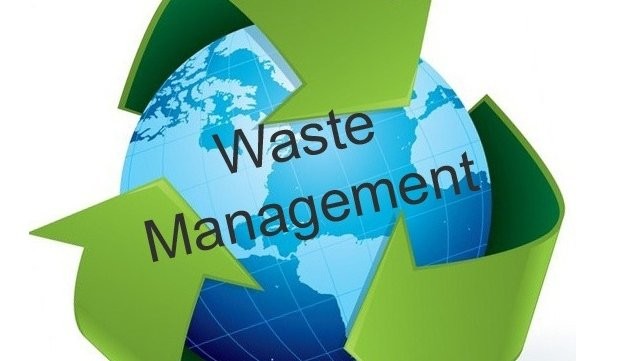Recycling Lives Services: Blazing A Trail in Responsible Recycling
Recycling Lives Services: Blazing A Trail in Responsible Recycling
Blog Article
Comprehending the Category and Handling of Different Types of Waste
Effective waste administration is critical for environmental sustainability, calling for a thorough understanding of the category and handling of various waste kinds. Family waste, industrial by-products, hazardous materials, electronic refuse, and natural remnants each demand unique procedures to guarantee security and reduce environmental damages.

Home Waste
Home waste, including a wide selection of thrown out products produced from daily living tasks, stands for a significant component of the total waste stream - recycling lives services. This category includes natural waste such as food scraps, yard cuttings, and paper items, along with not natural materials like plastics, steels, and glass. The diverse nature of household waste requires effective classification and administration to reduce environmental influence and promote lasting living practices
Reliable house waste monitoring begins with segregation at the resource, facilitating recycling, composting, and safe disposal. Organic waste, for circumstances, can be composted to generate nutrient-rich dirt amendments, decreasing landfill concern and enhancing dirt wellness. Recyclable products, consisting of paper, glass, and particular plastics, can be refined and repurposed, saving sources and minimizing energy intake related to brand-new product production.
Furthermore, harmful house waste such as batteries, electronic devices, and cleaning chemicals needs specialized handling to prevent soil and water contamination. Public recognition campaigns and convenient disposal options play crucial functions in making sure appropriate disposal and recycling of these products. By executing durable waste reduction techniques and promoting community participation, communities can substantially alleviate the environmental impact of family waste.
Hazardous Waste
Industrial waste, a significant factor to worldwide waste generation, encompasses a varied variety of materials created by production, building and construction, and other commercial activities. This category consists of byproducts such as scrap steel, plastics, rubber, chemicals, and various other residues. The make-up and volume of industrial waste can differ substantially depending upon the market and production processes included. Reliable administration of hazardous waste is vital for minimizing environmental effect and advertising lasting methods.
The handling of industrial waste generally entails a number of procedures: collection, therapy, disposal, and segregation. Collection systems are made to effectively gather waste products from various sources within a commercial procedure.
Embracing techniques such as waste reduction, resource recovery, and recycling can significantly minimize the problem of commercial waste on the atmosphere, adding to more lasting commercial practices.
Hazardous Waste

Corrosive wastes can damage or destroy living tissues and products. Combustible wastes can quickly stir up, positioning fire risks, while responsive wastes can trigger surges or launch hazardous gases upon call with various other compounds.
Efficient contaminated materials monitoring entails a number of essential methods: identification and segregation of unsafe products, risk-free transport and storage, and suitable learn this here now therapy and disposal. Therapy techniques might include chemical stablizing, incineration, and neutralization. Regulative conformity is crucial, guided by structures such as the Resource Preservation and Recuperation Act (RCRA) in the USA, which ensures safe and ecologically audio monitoring of contaminated materials.
Digital Waste
Electronic waste, frequently abbreviated as e-waste, stands for a growing obstacle in waste monitoring as a result of the quick obsolescence of technology. This category includes a wide variety of discarded electronic tools, consisting of mobile phones, computer systems, tvs, and house devices. The complexity of e-waste lies in its make-up; these products include a mix of useful products such as gold and copper, in addition to harmful compounds like lead, mercury, and cadmium.

Legislation and guidelines, such as the European Union's Waste Electronic and electric Tools (WEEE) Directive, purpose to advertise accountable e-waste administration. These policies mandate makers to promote the collection and recycling of digital products, thereby lowering the concern on land fills and minimizing environmental contamination.
Organic Waste
Organic waste, encompassing naturally degradable materials such as food scraps, backyard trimmings, and farming deposits, comprises a considerable part of the community strong waste stream. This kind of waste is noteworthy not just for its volume however also for site its possible ecological influence if not handled properly. Organic waste can disintegrate anaerobically in garbage dumps, producing methane, a potent greenhouse gas adding to environment change.
Appropriate handling of organic waste involves several methods. Additionally, drawing away food waste from landfills via donation programs can reduce food instability while reducing waste.
Municipalities and services are increasingly identifying the relevance of natural waste management. Implementing extensive organic waste reusing programs not just alleviates ecological impacts but additionally lines up with wider sustainability objectives, promoting a round economic situation where sources are consistently recycled and repurposed.
Verdict
Effective waste management and environmental management necessitate a thorough understanding of the category and handling of various waste types. Household, commercial, dangerous, digital, and organic waste each need distinctive treatments for disposal, partition, and therapy. Correct monitoring reduces ecological influence, saves resources, and advertises sustainability. Executing proper methods for every waste type ensures accountable and safe waste administration methods, ultimately adding to the security of environments and public health.
Effective waste administration is pivotal for ecological sustainability, needing a comprehensive understanding of the classification and handling of numerous waste kinds.Household waste, encompassing a wide variety of discarded products created from day-to-day living activities, represents a significant element of the general waste stream.Industrial waste, a significant contributor to worldwide waste generation, includes a diverse array of materials created by production, building, and various other commercial activities (recycling lives other services).Dangerous waste, a critical problem in waste management, comprises products that pose substantial dangers to human health and the atmosphere due to their toxic, destructive, flammable, or reactive buildings.Organic waste, including naturally degradable materials such as food scraps, backyard trimmings, and agricultural deposits, makes up a significant portion of the municipal solid waste stream
Report this page